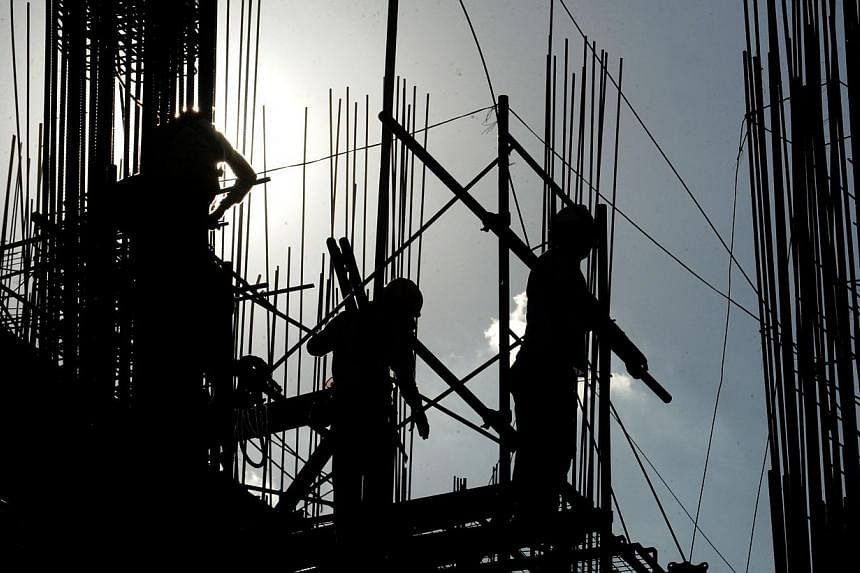MANILA - I don't really buy it, all this talk about a Philippine "economic miracle". Well, not yet.
Yes, I've had friends dealing in stocks and handling other people's money who tell me that money is, in fact, coming in, and I see the dazzling numbers and hear the optimism each time I attend one of those conferences and media briefings that trumpet "one of the greatest turnaround stories in recent years".
But the thing is, I don't see any of it. I can't touch it or smell it or run my fingers through it.
It becomes even harder to believe when I come across a survey that says nine of 10 Filipinos were short on cash in the past year.
Most of them said nearly all the money they made each month went to rent, utility bills and food. Nearly half added their children's tuition, and a quarter said their budgets were upended by a medical emergency and an unplanned loan.
No wonder then that only one in four families here have savings. The rest just meander from one day to another, hoping Thursday won't come up with an unpleasant surprise that will ruin the family budget for the entire year.
I live a fairly comfortable life with a fairly comfortable salary here. Yet, I too find it a juggling act to pay my bills and still have enough left at the end of each month for a rainy day.
I always dread a rainy day because one particularly heavy downpour can easily decimate my meagre savings.
Two weeks ago, I spent 8,200 pesos (S$234) in one day. I didn't buy a fancy appliance or gadget or spend the money on anything vain. I topped up my 15-year-old car's petrol and my highway toll electronic pass, had a haircut, got my daughter a new dress for her classmate's 18th birthday, bought my cholesterol medication, took my kids to the movies, and then we all had dinner later.
Then, just the other day, I paid 8,700 pesos worth of Internet and electric bills. A chunk of that - about 5,800 pesos - went to paying for my high-speed Internet access, which I need for my job. ("High-speed" here means 15mbps, by the way.)
Each time I go to the grocery, I would spend at least 400 pesos, and there'd be just a few items in my bag: shampoo, toothpaste, bread, cooking oil. They'll even charge me two pesos for the bag.
The truth is, it's not cheap to live in Manila, and all this talk about "sizzling growth" and a "red-hot economy" isn't making it any cheaper.
Of course, with a hefty dose of frugality, a couple with three children should be able to make ends meet with 60,000 pesos a month.
But what about the guy who makes just 466 pesos a day, the minimum wage in metropolitan Manila? And what more that poor chap without a regular job, who wanders from one odd job to another that pays about 200 pesos a day?
How can anyone live on 200 pesos a day when a one-piece Chickenjoy and spaghetti meal at Jollibee already costs 115 pesos?
It's even distressing knowing that inflation - technocrat speak for prices of basic goods and services - will just keep rising in the months ahead.
These are the numbers you'll find on the ground. On the ground, a 7.2 per cent growth in gross domestic product (GDP) or a triple-B investment-grade credit rating do not translate into extra cash for a new pair of shoes for the nine-year-old who's going back to school or a modest vacation to a cheap beach resort just outside Manila.
I guess there is growth somehow.
I see construction all around the metropolis: condominiums, office buildings, highways, airports, interchanges. These projects do create jobs.
Call centres are mushrooming everywhere, again providing entry-level employment for the country's army of college graduates.
But who are really getting the lion's share of the growth pie? Let's turn to the numbers again.
Forbes Asia estimates that in 2012, the collective wealth of the 40 richest Filipino families - the "0.01 per cent" - grew 37.9 per cent to US$47.4 billion (S$59.5 billion). That is equivalent to 76.5 per cent of the increase in GDP for the year.
As these numbers tell it, it is a growth that is raining at the top, leaking somewhat at the very bottom and bone dry in the middle.
I have a cousin who graduated four years ago with a degree in agriculture. He hasn't found a job related to his education since then. He has had to make ends meet working at the farm during harvest season or raising someone else's livestock.
Now, he's taking driving lessons so he can drive a jeepney or land a job somewhere in the Middle East.
Now, you do the math.

